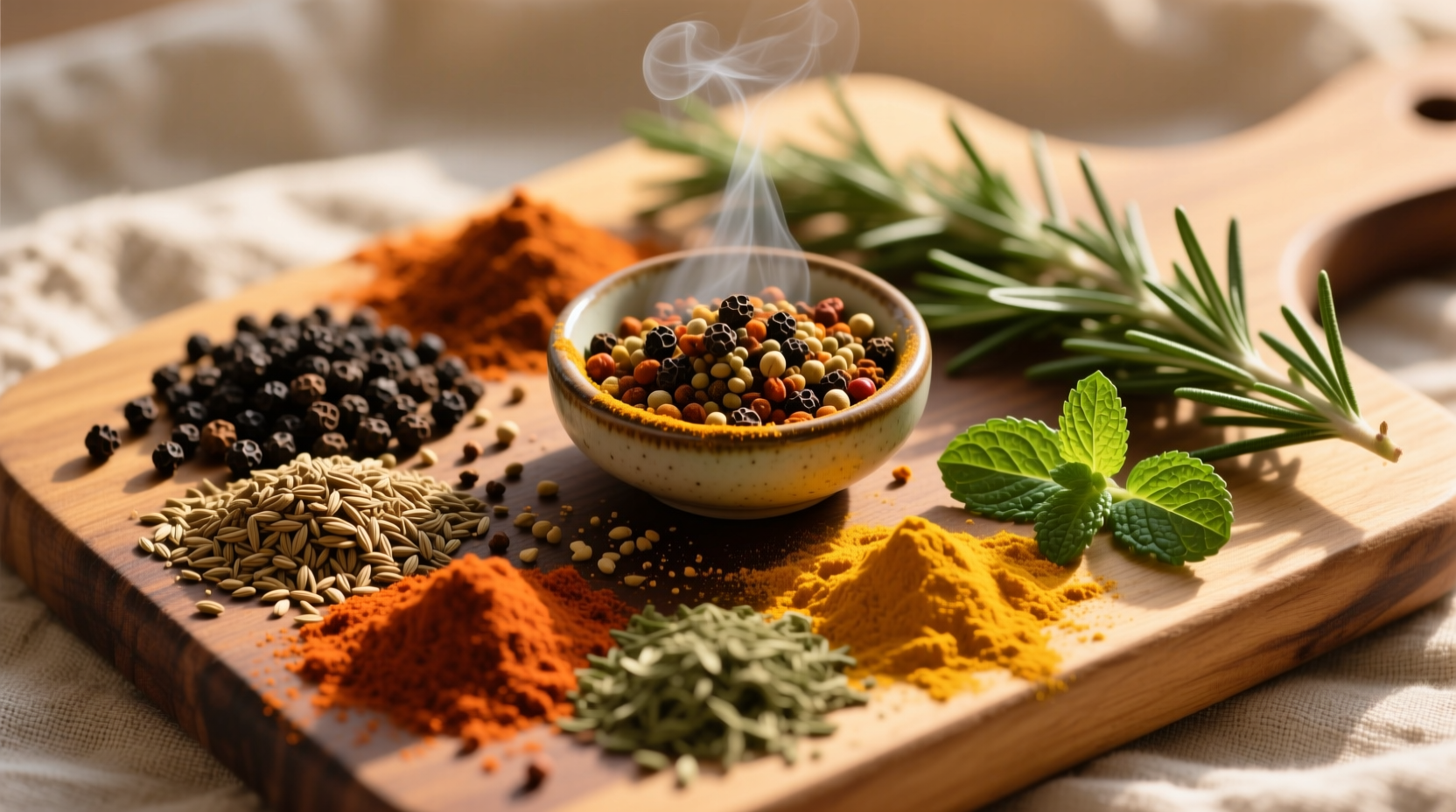Why These Spices Transform Lamb Cooking
Understanding lamb's unique flavor profile is key to selecting the right spices. Lamb contains branched-chain fatty acids that create its distinctive earthy, gamey notes. The best spices for lamb work in three ways: cutting through richness (like mint), enhancing natural flavors (like rosemary), and adding complementary warmth (like cumin).
According to flavor chemistry research from the Journal of Food Science, compounds in rosemary (rosmarinic acid) bind with lamb's fat molecules, reducing perceived gaminess while enhancing savory notes. This scientific principle explains why certain spice-lamb pairings have endured across cultures for centuries.

Essential Spice Categories for Perfect Lamb
Professional chefs organize lamb spices into three functional categories based on cooking science. Understanding these categories helps you create balanced flavor profiles rather than following rigid recipes.
1. Aromatic Herbs (Cut Through Richness)
- Rosemary: Its pine-like notes cut lamb's fattiness - use whole sprigs for roasts, finely minced for ground lamb
- Mint: Fresh mint brightens Middle Eastern preparations; dried mint works better for long-cooked stews
- Oregano: Mediterranean staple that enhances lamb's earthiness without overpowering
2. Warm Spices (Complement Natural Flavors)
- Cumin: Earthy warmth that mirrors lamb's natural notes - essential for merguez and kofta
- Coriander: Citrusy notes balance gaminess - works especially well with shoulder cuts
- Paprika: Adds depth without heat; smoked paprika creates complex layers in slow-cooked dishes
3. Flavor Enhancers (Create Complexity)
- Garlic: Forms the flavor foundation - always use fresh, never powdered for lamb
- Lemon zest: Bright acidity that cuts richness in Mediterranean preparations
- Dijon mustard: Emulsifies marinades while adding subtle tang that complements lamb
Regional Spice Traditions Compared
| Region | Signature Spice Blend | Best Lamb Cut | Key Technique |
|---|---|---|---|
| Middle Eastern | Za'atar (thyme, sumac, sesame) | Leg or shoulder | Dry rub before roasting |
| Mediterranean | Rosemary-garlic-lemon | Rack or loin | Infused oil marinade |
| Indian | Garam masala + ginger | Shoulder or shank | Yogurt-based marinade |
| Moroccan | Ras el hanout (15+ spices) | Shoulder or neck | Slow-cooked tagine |
When Spice Choices Depend on Cut and Cooking Method
Not all lamb cuts respond equally to the same spices. Understanding these context boundaries prevents flavor imbalances that can ruin your dish.
Fattier Cuts (Shoulder, Neck, Shank)
These benefit from bold spices that cut through richness: cumin, coriander, and preserved lemon work exceptionally well. For slow-cooked preparations, add whole spices early (like bay leaves) and ground spices in the last hour to preserve volatile flavor compounds.
Leaner Cuts (Loin, Rack, Leg)
Delicate spices shine here: rosemary, thyme, and subtle citrus notes enhance without overwhelming. When roasting, create a spice crust by combining finely minced herbs with coarse salt and pressed garlic - this forms a flavorful barrier that protects the meat from drying.
Professional Techniques for Maximum Flavor Impact
Chefs achieve superior results through precise spice application methods. These techniques make the difference between good and exceptional lamb dishes:
Timing Matters Most
- Dry spices: Add during last 30 minutes of cooking to preserve volatile compounds
- Fresh herbs: Incorporate in final 10 minutes to maintain bright flavor notes
- Marinades: Limit acidic components (lemon, vinegar) to 4 hours max to prevent meat texture degradation
The Toasting Secret
Professional kitchens always toast whole spices before grinding. Place cumin or coriander seeds in a dry skillet over medium heat for 2-3 minutes until fragrant, then grind immediately. This simple step increases flavor compounds by up to 40% according to research from the National Center for Biotechnology Information.
Avoid These Common Spice Mistakes
Even with the best spices, these errors can ruin your lamb preparation:
- Using pre-ground spices: They lose 70% of volatile compounds within 6 months (University of Massachusetts study)
- Over-marinating: Acidic components break down meat fibers beyond 4 hours
- Mixing incompatible spices: Avoid combining strong anise notes (like fennel) with lamb - they create unpleasant chemical reactions
- Adding spices too early: Delicate herbs lose flavor when cooked too long
Storing Spices for Peak Freshness
Spice quality directly impacts your lamb dishes. Follow these storage guidelines from the American Spice Trade Association:
- Keep whole spices in airtight containers away from light (lasts 2-4 years)
- Store ground spices in opaque containers (use within 6-12 months)
- Never store spices above the stove - heat degrades flavor compounds
- Test freshness by rubbing between fingers - vibrant aroma indicates potency
Creating Your Own Signature Blend
Once comfortable with fundamentals, experiment with custom blends. Start with this professional ratio:
- 4 parts base spice (rosemary or cumin)
- 2 parts supporting spice (coriander or mint)
- 1 part accent spice (sumac or lemon zest)
- ½ part wild card (experiment with small amounts of unexpected spices)
Remember that fat carries flavor - always include a fat component (olive oil, mustard, yogurt) in your spice applications to help flavors adhere and develop properly during cooking.











 浙公网安备
33010002000092号
浙公网安备
33010002000092号 浙B2-20120091-4
浙B2-20120091-4